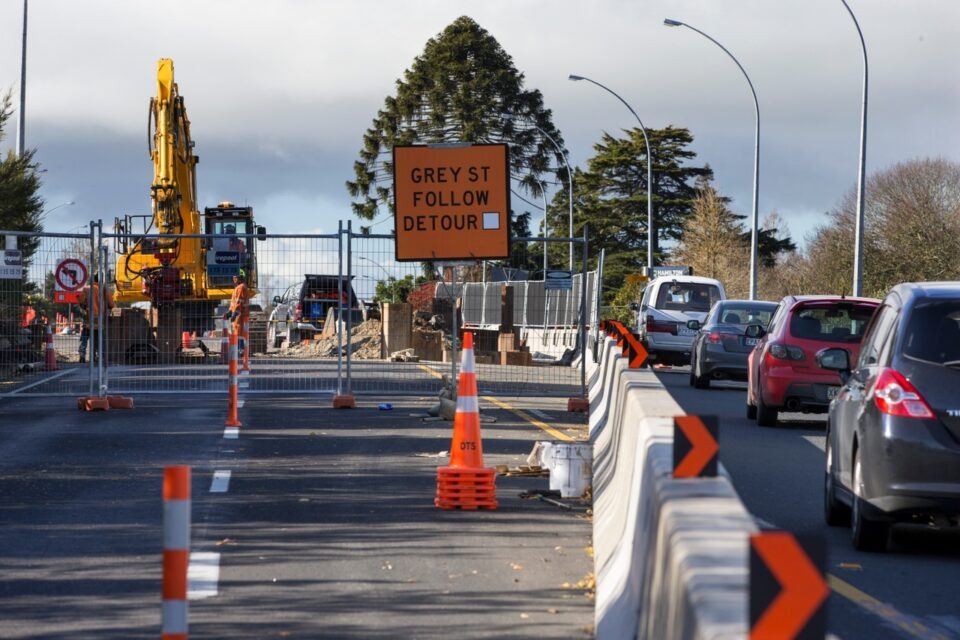By Brett Gliddon Group General Manager, Transport Services.
Every day people go to work on our roads and people drive through those work sites, and they all deserve to return home safely. Yet fatalities are still happening at road work sites all over New Zealand. Between 2017 and 2021, there were 43 fatal crashes and 287 serious injury crashes at sites with temporary speed limits.
There must be collective change, where peoples’ safety is a priority for everyone in the Temporary Traffic Management (TTM) sector.
In April 2023, Waka Kotahi and the New Zealand Road Worker Safety Governance Group published the New Zealand guide to temporary traffic management (NZGTTM). In partnership with Fulton Hogan, Downer, Higgins, HEB, WSP, WorkSafe, Civil Contractors NZ, ACENZ, LGNZ, local government representatives and the road safety sector, we developed and tested the guide, lifting our perspective on safer practices to a new level – thank you to everyone involved.
The guide represents a new direction for contractors planning and managing activities on our road. By moving from a compliance-based model to a risk-based approach in line with the Health and Safety at Work Act 2015 (HSWA), the priority becomes ‘safety first’ for road workers and people travelling through work sites.
As we begin the transition to the NZGTTM, there will be questions about the cost – the cost of business to implement better health and safety, or the cost of time and impact to those using the road. In my mind, the new risk-based approach is about people, and putting peoples’ health and safety outcomes before costs.
From our testing with contractors last summer, the new risk-based approach to TTM indicates both cost savings and cost increases, but importantly we saw increases in safety for people. A robotic mower, road closures over three nights instead of stop/go for 16 nights, or scheduling multiple operations together with TTM all increase safety and decrease costs. Conversely, using crash mitigation barriers instead of cones at long-term work sites might increase costs, but the safety of road workers and road users is substantially improved.
What the change to the risk-based approach and the NZGTTM does allow for is the right sizing of controls to the risks identified at each work site. It puts TTM planning for risk management first, before deciding on the TTM control types, design and equipment. So TTM set ups will be as safe as possible for the actual risks identified at each work site rather than following a set of rules.
This makes safety industry-led. It gives the contractor the guidance to make decisions based off the risk in front of you, and unique to the work site. It puts safety first.
Waka Kotahi is requiring our suppliers to follow the guide as we start to roll it out into our contracts. In all cases across the industry the contracting PCBU, lead contractor PCBU, sub-contractor PCBU and engineer/designer PCBU must comply with the requirements of New Zealand legislation – the HSWA, so by adopting and using the new NZGTTM, you’ll get advice to help you meet your legislative duties to keep people safe at temporary traffic work sites. Over time, our intent is for the new guide to replace the Code of Temporary Traffic Management (CoPTTM) since its compliance-based approach is no longer fit for purpose.
This approach does mean a new way of working.
To support contractors and Roading Control Authorities to transition to the NZGTTM, a new industry-led steering group for road worker safety has been created. It’s a really exciting step forward, as the group made up of 12 representatives from across the sector will represent views from their part of the industry and lead the practical adoption of the approach.
Waka Kotahi is also leading the way. Through the construction and maintenance suppliers we work with, Fulton Hogan, Downer, Higgins, HEB Construction and WSP have committed to being early adopters of the risk-based approach. During 2023 we’ll work to update our existing contracts, as well as develop further guidance for industry to put principles into practice, hold educational workshops and roadshows, and support the TTM steering group’s work to transition the wider sector.
Ultimately, the NZGTTM gives contractors the tools to focus on the risk to people at work sites, to apply a hierarchy of controls, and to apply engineering standards. You can find the NZGTTM and the TTM Library on the Waka Kotahi website, with a range of additional supporting resources for using the risk-based safety approach.
This change isn’t just about the publication of new guidance, it’s reinforcing the importance of a culture change towards safer practices. One where a human face must drive our safety approach. We’re thinking broader, and through our Road Worker Safety Improvement Programme we’re aiming to reduce deaths and serious injuries at our road work sites by supporting research on the risk-based approach, holding safety camera trials, and with road worker safety education campaigns.
I encourage you as contractors to get on board. To put people and safety first before costs, in all cases, and champion an environment where people working on our roads or travelling through work sites return home safely, every day.

